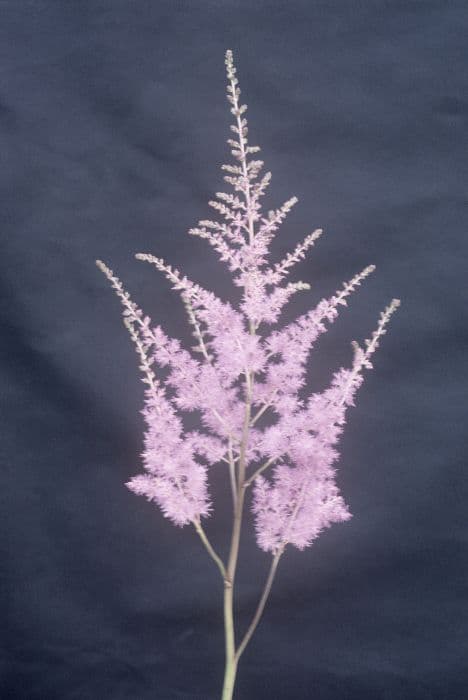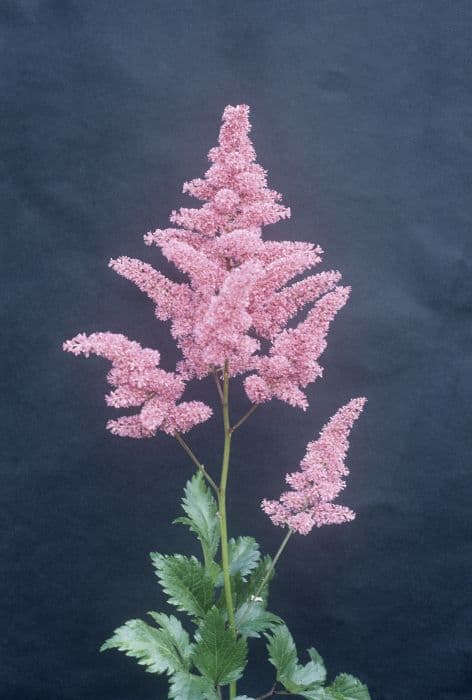Roundleaf Alumroot Heuchera cylindrica 'Greenfinch'

ABOUT
The 'Greenfinch' variety of Coral Bells is a clump-forming perennial that is admired for its decorative foliage and dainty flower spikes. The plant has a neat mound of rounded leaves, which are a distinguishing feature due to their unique coloration. Each leaf displays a vibrant green hue that can range from lime to deeper green shades, often with a silver overlay that highlights the intricate veining patterns on the leaves' surface. During the blooming season, delicate stems rise above the foliage carrying tiny bell-shaped flowers. The flowers are typically a soft white or cream, adding a contrast to the foliage below. They are arranged in loose panicles and can provide a striking visual interest to gardens or arrangements. Despite the blooms' charming appearance, many gardeners equally appreciate the plant for its year-round foliage that brings persistent color and texture to the landscape. Overall, the 'Greenfinch' Coral Bells is appreciated for its compact and mounding habit, which creates a lush appearance in garden settings. Its evergreen to semi-evergreen characteristics make it a versatile choice for mixed borders, ground cover, or container gardening. It fits well into woodland gardens or shaded areas, bringing light and variety to spots where many other plants may not thrive. With its easy-going nature and attractive appearance, it's a popular selection for those looking to add long-lasting interest to their outdoor spaces.
About this plant
 Names
NamesSynonyms
Roundleaf Alumroot, Greenfinch Coral Bells, Cylinder-Flowered Coral Bells, Greenfinch Alumroot.
Common names
Heuchera cylindrica 'Greenfinch'.
 Toxicity
ToxicityTo humans
The Heuchera cylindrica 'Greenfinch', commonly known as Roundleaf alumroot, is not known to be toxic to humans. Ingesting parts of the plant is unlikely to cause poisoning or adverse health consequences. However, it is generally recommended to avoid eating ornamental plants as they are not intended for consumption.
To pets
Roundleaf alumroot is also not known to be toxic to pets. It should be safe for cats, dogs, and other domestic animals, and ingesting small quantities of the plant should not cause poisoning or harmful side effects. However, as with any non-food plant, ingestion in large quantities can potentially cause gastrointestinal upset simply due to the unusual material in the digestive system.
 Characteristics
CharacteristicsLife cycle
Perennials
Foliage type
Evergreen
Color of leaves
Green
Flower color
Greenish
Height
1-2 feet (30-60 cm)
Spread
1-2 feet (30-60 cm)
Plant type
Herb
Hardiness zones
4
Native area
North America
Benefits
 General Benefits
General Benefits- Attracts Pollinators: The flowers of Coral Bells can draw in butterflies and hummingbirds, contributing to pollinator health and biodiversity.
- Drought Tolerance: Once established, Coral Bells are fairly drought-tolerant, making them a good choice for water-conserving landscapes.
- Low Maintenance: These plants require minimal care once established, making them ideal for gardeners who seek plants that don't need constant attention.
- Shade Tolerant: Coral Bells can thrive in shaded areas where other plants might struggle, providing texture and color to darker garden spots.
- Seasonal Interest: With evergreen varieties, Coral Bells give a garden year-round interest through foliage and seasonal blooms.
- Versatility in Landscape Design: The varied foliage colors and textures can complement a wide range of garden designs, from woodland to contemporary.
- Ground Cover: The dense foliage can help suppress weeds and cover bare spots in the garden, reducing maintenance chores.
- Frost Resistant: Coral Bells can endure frost and are capable of surviving in cooler climates, making them a robust choice for many gardens.
- Soil Adaptability: They can adapt to a range of soil conditions, though they prefer well-draining soils, making them a flexible choice for different garden settings.
 Medical Properties
Medical PropertiesThis plant is not used for medical purposes.
 Air-purifying Qualities
Air-purifying QualitiesThis plant is not specifically known for air purifying qualities.
 Other Uses
Other Uses- Photographic Subjects: The distinct foliage and flowers of Heuchera Greenfinch can serve as striking subjects for macro and nature photography, enhancing portfolios and garden photography collections.
- Edging Plants: With its mounding habit and attractive leaves, Heuchera Greenfinch creates a neat, natural border in garden beds, pathways, or around other features.
- Containers and Hanging Baskets: Due to its compact size and ornamental leaves, Heuchera Greenfinch can be planted in containers or hanging baskets to adorn patios, balconies, or window displays.
- Crafting Pressed Flowers: The delicate flowers of Heuchera Greenfinch can be pressed and used in crafting, such as creating bookmarks, greeting cards or framed botanical art.
- Terrariums and Fairy Gardens: Small, humidity-loving, and easy to grow, Heuchera Greenfinch makes an excellent addition to terrariums or fairy gardens, giving a lush, magical appearance.
- Nature-Inspired Artwork: The intricate patterns of Heuchera Greenfinch leaves can inspire designs in nature-themed artwork, textiles, and jewelry.
- Frosty Garden Accent: Heuchera Greenfinch retains its leaf color well in colder months, providing a pop of color in frosty, winter landscapes.
- Educational Plant: Due to its environmentally friendly traits, Heuchera Greenfinch can be used as an educational tool to teach about sustainable gardening practices and native plant gardening.
- Backdrops for Aquatic Features: Planted behind ponds or water features, Heuchera Greenfinch offers a complementary green backdrop that highlights the reflective properties of the water.
- Culinary Garnish: While not a common use, the colorful leaves of Heuchera Greenfinch can be used as a decorative, non-toxic garnish for plating dishes in high-end culinary presentations.
Interesting Facts
 Feng Shui
Feng ShuiThe Roundleaf Alumroot is not used in Feng Shui practice.
 Zodiac Sign Compitability
Zodiac Sign CompitabilityThe Roundleaf Alumroot is not used in astrology practice.
 Plant Symbolism
Plant Symbolism- Enduring Beauty: Heuchera cylindrica 'Greenfinch', also known as the Greenfinch Coral Bells, often symbolizes a lasting beauty due to its persistent and attractive foliage that remains visually appealing throughout the seasons.
- Versatility: As this plant is adaptable to various garden conditions, it often represents versatility and the ability to thrive in different environments.
- Persistence: The hardy nature of Greenfinch Coral Bells, capable of withstanding both drought and frost, symbolizes resilience and the strength to endure challenging circumstances.
 Water
WaterThe Round-leafed alumroot should be watered regularly to keep the soil evenly moist, but not waterlogged. It is best to water the plant deeply once a week, providing about one to one and a half gallons of water, depending on the size of the plant and the environmental conditions. During the hotter, drier periods, you might need to water it more frequently, while in cooler weather, you can reduce the watering schedule. Always check the top inch of the soil for dryness before watering again. Overwatering can lead to root rot, so ensure proper drainage.
 Light
LightThe Round-leafed alumroot thrives in a location with partial shade to full shade. It should be protected from the intense afternoon sun, as this can scorch the leaves. The ideal spot for this plant would be under the dappled light of taller trees or on the north side of a building where it can receive bright, indirect light without being exposed to direct sunlight.
 Temperature
TemperatureThe Round-leafed alumroot grows best in temperatures ranging from 60 to 70 degrees Fahrenheit. It can survive minimum temperatures down to approximately 20 degrees Fahrenheit but should be protected from frost to prevent damage. During extreme cold, it's beneficial to provide some form of frost protection, such as a frost cloth.
 Pruning
PruningThe Round-leafed alumroot benefits from pruning to remove old, faded leaves and to encourage a more compact, tidy growth habit. Pruning can be done in late winter or early spring before new growth begins. Deadheading the spent flower stalks after blooming can also promote a second flush of flowers.
 Cleaning
CleaningAs needed
 Soil
SoilRoundleaf Alumroot thrives in a well-draining, fertile mix with a slightly acidic to neutral pH between 6.0 and 7.0. A combination of loamy garden soil, peat or coconut coir, and perlite or vermiculite can create an ideal environment for this plant. It is important to ensure the soil allows for good aeration while retaining adequate moisture.
 Repotting
RepottingRoundleaf Alumroot generally requires repotting every 2-3 years or when it outgrows its current pot. It is best repotted in the spring, just before the growing season begins. Always choose a pot that is slightly larger than the previous one to give the plant's roots enough room to grow.
 Humidity & Misting
Humidity & MistingRoundleaf Alumroot prefers moderate humidity levels but is quite adaptable to different environmental conditions. Ideal humidity for this plant ranges from 40% to 60%. If the indoor air is dry, especially during winter months, a humidifier or pebble tray with water can help maintain proper humidity.
 Suitable locations
Suitable locationsIndoor
Provide bright, indirect light and consistent moisture.
Outdoor
Plant in partial shade; ensure well-draining soil.
Hardiness zone
4-9 USDA
 Life cycle
Life cycleThe life of Heuchera cylindrica 'Greenfinch', commonly known as the roundleaf alumroot or the Greenfinch coral bells, begins with seed germination, occurring in a moist and well-drained soil environment under partial shade. The seedlings emerge and develop into rosettes of basal leaves, which grow larger over time, with the foliage displaying a delicate range of greens and occasionally marbled patterns. As the plant matures, it sends up long, slender flowering stalks in late spring to early summer, topped with small bell-shaped flowers that attract pollinators. After pollination, seeds are produced, mature, and get dispersed, allowing for new plants to establish, creating a cycle of reproduction. In ideal conditions, Greenfinch coral bells maintain a perennial growth habit, with foliage persisting through the winter in milder climates, but may die back to the ground in colder regions, to re-emerge in spring. A mature Heuchera cylindrica 'Greenfinch' can also be propagated by division every few years to revitalize the plant and create new starts.
 Propogation
PropogationPropogation time
Spring-Early Summer
Propogation: Heuchera cylindrica 'Greenfinch', commonly referred to as the Greenfinch alumroot, is typically propagated by division. The best time to divide this plant is in the spring or early fall when temperatures are cooler, which reduces stress on the plant. To propagate by division, one should carefully dig up the plant and gently separate the clumps of crowns and roots, ensuring that each division has a portion of the root system along with several growing points or leaves. These divisions are then replanted at the same soil depth they were growing at previously, spaced about a foot (approximately 30 centimeters) apart to allow for growth and air circulation. Water the divisions well after planting to help establish them. This method is advantageous because it is simple and also rejuvenates older clumps that may have become woody and less vigorous. Dividing the plants can also help prevent overcrowding and promotes healthier growth.









